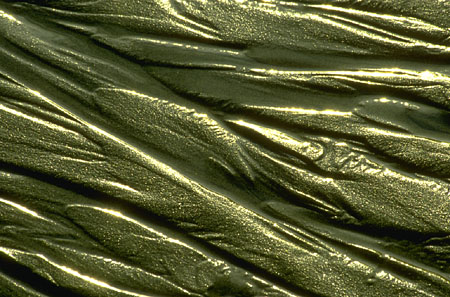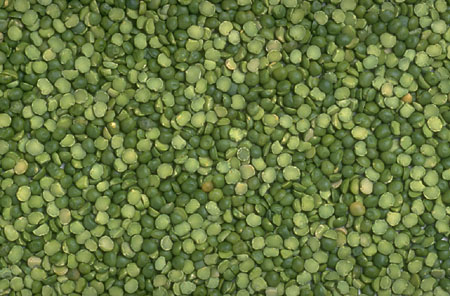LITR 5535: American
Romanticism

Sample Student Midterm 2006
Aaron Morris
Encountering the Sublime Wilderness
The Bedford Glossary of Critical and Literary Terms defines the sublime as “that quality in a literary work that elevates the reader to a higher plane” (Murfin 467). In Edmund Burke’s work, A Philosophical Inquiry into the Origin of our Ideas of the Sublime and the Beautiful, he associates the sublime with terror and also states that the sublime is infinite. Immanuel Kant in Critique of Judgment describes the sublime as something that is beautiful and “simultaneously awe inspiring, unsettling, and even ethically motivating” (Murfin 467). The techniques of terror, infinity, and awe inspiring beauty were used to portray the wilderness in pre-romantic texts and later converged into the idea of the sublime wilderness and conquering hero that was represented in romantic texts, such as The Last of the Mohicans.
Many pre-romantic works, including that of Mary Rowlandson and Washington Irving, concentrated on the association with terror when describing the wilderness. As Matt Mayo wrote in a previous midterm, “Colonial America was a fascinating and frightening wilderness, filled with incomprehensible savagery, in the minds of early settlers and European onlookers.” Both Rowlandson and Irving described the wild areas of Colonial America as haunted spaces. Irving used the “headless ghost of a Hessian trooper” to inspire fear and to dictate the woods as a separate, off-limits area full of the unknown. Rowlandson used equally savage and haunting Indian characters to portray the inhabitants of the forests and wild unexplored areas. She described the Indian characters as “black creatures of the night.” They were horrifying creatures that exist in the wilderness, which Rowlandson describes as “a lively resemblance of hell.”
In addition to terror, another aspect of the sublime is infinity. Irving combined terror and infinity in Rip Van Winkle when he wrote, “a deep mountain glen, wild, lonely, and shagged, the bottom filled with fragments from the impending cliffs, and scarcely lighted by the reflected rays of the setting sun.” In this passage, Irving’s description clearly relates to a place that is both infinite and terrifying. He described, “nature’s beauty as being so vast it became threatening” (Brooks Midterm). At times, Irving used the concept of infinity to intensify the dark and threatening aspects of the wilderness. Such is the case in The Legend of Sleepy Hollow, when he wrote, “On that side of the road where the brook entered the wood, a group of oaks and chestnuts, matted thick with wild grapevines, threw a cavernous gloom over it.” It is a gloom so intense that it cannot be conceived in terms of ordinary woods, but it must be compared to a dark, cavernous interior.
The third aspect of the sublime, as defined in Bedford, is awe-inspiring beauty. Irving uses this facet of the sublime when he writes that there was something “strange and incomprehensible about the unknown, that inspired awe, and checked familiarity.” In essence, he writes of a hilly and wooded area, which is so breathtakingly beautiful, that it causes one’s mouth to drop in awe.
Thomas Jefferson also used the concept of awe to describe nature as evidenced in The Natural Bridge. When looking over the side of the bridge he writes about being in awe of the extreme beauty below and equally so when viewing the bridge from underneath. Jefferson then combines the topics of terror and awesome beauty to describe a natural landscape that is so intensely beautiful that it is “painful and intolerable.” The topics of pain and pleasure intermingle to form a sublime beauty that Jefferson describes as “impossible emotions and rapture.”
Cooper, like Jefferson, has similar awe-inspiring descriptions of nature. In Nancy Gordy’s midterm, she explains how Cooper uses these beautiful wilderness descriptions to “incorporate sublime moments for his characters in their quest to return to the safety of Fort Henry” (Gordy Midterm). She gives an excellent example of awesome beauty from The Last of the Mohicans, “When the travelers reached the verge of the precipice, they saw, at a glance, from that dizzy height, the holy lake the valley that marked the spot, beneath which lay the silent pool of the bloody pond.” (Cooper 140). The view from the precipice at dizzying heights is similar to Jefferson’s bridge in both form and description.
Students have often struggled to define Romanticism in literature. This is understandable since the task of defining Romanticism is “quicksand in which many good critics have floundered” (Foster xi). While developing a comprehensive definition of the term may prove to be an arduous task, to say the least, we can develop an understanding of the beginning of the romantic period by noting the use of the sublime to describe the landscape of the wilderness in many pre-romantic works. The critic Perry Miller was able to define certain traits of Romanticism by showing that the “American identity in the Romantic period depended heavily on the American setting-the wilderness” (Foster xii). Miller described this setting as “the sublimity of the natural backdrop” (Foster xii).
The 19th century began with artists and writers describing “wild, romantic, awful scenery” (Foster 3-5). The aspects of the sublime (terror, infinity, and awe) in wilderness, then, culminate in The Last of the Mohicans and other early 19th century works. Cooper’s novel incorporates all of these aspects of the sublime, but what amplifies our conception of the sublime wilderness in Cooper’s work are the characters and their reaction to the wilderness. The heroic characters of Mohicans have the ability to enter in to this vast, terrifying domain and thrive without the presence of civilization. We see many times the evidence of Hawkeye’s skill with a gun as well as the Indians’ skill with tracking and surviving in the wilds. The rescue of Monroe’s daughters is an example of this extraordinary skill in dealing with nature. Their rescue “is not based on the powers of God but on the vastly sublime powers of Hawkeye and Uncas in finding the captive’s trail in what would otherwise be considered to be an impossible trail to follow” (Brooks Midterm).
At times, Hawkeye’s skill extends beyond merely coping with nature into the supernatural. He is able to don the costume of a bear and produce such effective grunts and growls that he convinces some of the Indians that he is actually a bear, or as in the case of Magua, the Indian conjuror disguised as a bear. Assuming the guise of the bear, Hawkeye merges “seamlessly with nature and transcend[s] the limits of being human” (Mayo Midterm). He does not convince Uncas, of course, who is able to see through the ruse with his equally supernatural abilities, which allow him to run for several days without food, track the lightest fall of a moccasin on a rock, and fight off an entire village after being captured.
Long Rifle and Cooper’s “good” Indians are able to coexist with nature and are not dependent upon civilization to survive. The characters do not fear nature, but are able to understand and cope with the wilderness environment. This ability “allows them insight, intuition and a one-ness with the universe that the other characters fail to possess” (Davis Midterm).
Part of the believability of these characters conquering the sublime wilderness is the fact that Cooper also describes the characters as sublime. These descriptions contribute to the ability of the heroes to push beyond normal physical limits with incredible stamina, skill, and wilderness knowledge and they accomplish it with seeming little effort. “All the characters travel from one situation to the next whether in the clutches of Indians or the company of whites with the ability to adjust without worry and solve their problems effortlessly” (Brooks Midterm). This effortless skill in the wilderness combines to make Cooper’s heroes sublime, with “abilities and accomplishments [that] are so vast as to be incomprehensible and unattainable in the real world” (Brooks Midterm). These transcendent, sublime heroes then converge with the terrifying, infinitely vast, and awesome wilderness to make The Last of the Mohicans a classic example of American Romanticism.
Beyond
Cooper:
After Cooper’s novel became wide spread, it was not uncommon to have the word ‘sublime’ listed in the description of nature. In the 1860’s Freeman Hunt described the Highlands above the Hudson, “Its scenery throughout is magnificent, and in this particular region [the Highlands] sublime” (Foster 3). A few years later, Samuel Bowles described traveling the Western United States as “[having an] overwhelming sense of the sublime, of awful desolation, of transcending marvelousness and unexpectedness, that swept over us” (Foster 26). In fact, these descriptions are commonplace and even seem required when discussing the American West.
In addition to the sublime nature descriptions in American literature, we also see writers who follow Cooper, who create heroes able to conquer this terrifying space. An example of such a writer is Hawthorne, who develops a hero that encounters the devil in the wilderness and is able to overcome temptation and stick to his “Faith.” Hawthorne’s sublime descriptions of the wilderness and devilish inhabitants owe much to the pre-Romantics and Cooper. The hero who overcomes the devil and is able to leave the wilderness is reminiscent of Hawkeye dealing with the “bad” Indian characters in Mohicans.
In addition to Hawthorne, we see many other writers from the early nineteenth century to present times utilizing techniques and characters that Cooper developed. The horrifying Gothic wilderness is still evident in screenplays such as Blair Witch Project, Hawkeye was a model for the frontier hero that formed the basis of many movies and novels taking place in the American West, and even the quirky preacher/clown is evident in modern Western interpretations such as Deadwood. The Last of the Mohicans was set in a vast wilderness with grand characters that help us to examine the extinction of a way of life for the Indians. The wilderness and the heroic characters of Mohicans are, without a doubt, sublime and many works in American literature and film seek to emulate those techniques to achieve the same level of critical and popular success.
Works Cited
Brooks, Mary. “In the Space Between Rests the Sublime.” Midterm. University of Houston Clear Lake, 2005.
Cooper, James Fennimore. The Last of the Mohicans. New York: Penguin Books USA Inc., 1986.
Davis, April. “Crossing Boundaries.” Midterm. University of Houston Clear Lake, 2003.
Foster, Edward Halsey. The Civilized Wilderness: Backgrounds to American Romantic Literature, 1817-1860. New York: The Free Press, 1975.
Fussell, Edwin. Frontier: American Literature and the American West. Princeton, New Jersey: Princeton University Press, 1965.
Gordy, Nancy. “The Sublime, Pain and Pleasure: Boundaries Between Nature and Society.” Midterm. University of Houston Clear Lake, 2003.
Mayo, Matt. “The Heroic Individual of American Romanticism.” Midterm. University of Houston Clear Lake, 2005.
Murfin, Ross, and Supryia Ray. Bedford Glossary of Critical and Literary Terms. New York: Bedford/St. Martin’s, 2003.
|
|
|
|


